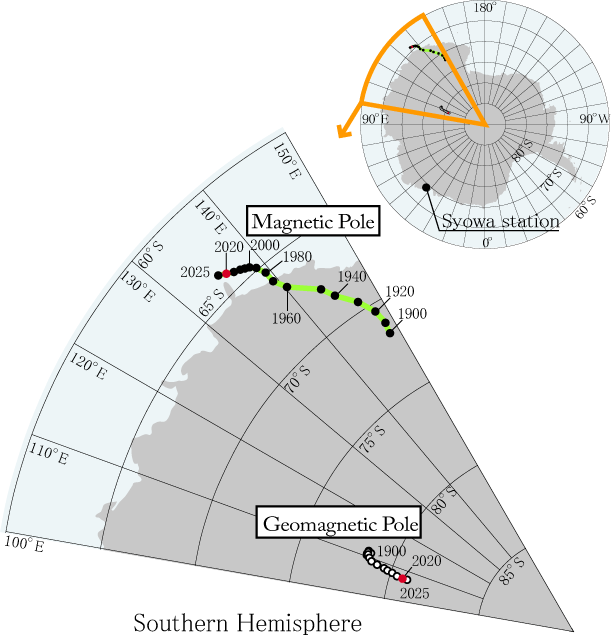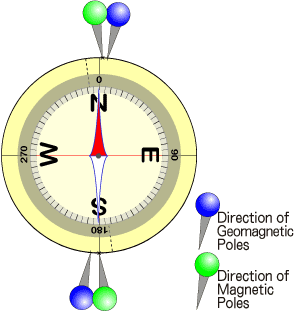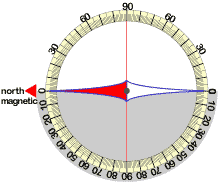 Magnetic North, Geomagnetic and Magnetic Poles
Magnetic North, Geomagnetic and Magnetic Poles

 Magnetic North, Geomagnetic and Magnetic Poles
Magnetic North, Geomagnetic and Magnetic Poles
| Figure 1 Locations of geomagnetic poles and magnetic poles based on IGRF-14 from 1900 to 2000 every 10 years and every 5 years thereafter, and 2025 (red) and 2030 (prediction). | |||||||||||||||||||||||||||||||||||||||||||||||||||||||||||||||||||||||||||||||||||||||||||||||||||||||||||||||||||||||||||||||||||||||||||||||||||||||||||||||||||||||||||||||||||||||||||||||||||||||||||||||||||||||||||||||||||||||||||||||||||||||||||||||||||||||||||||||||||||||||||||||||||||||||||||||||||||||||||||||||||||||||||||||||||||||||||||||||||||||||||||||||
|---|---|---|---|---|---|---|---|---|---|---|---|---|---|---|---|---|---|---|---|---|---|---|---|---|---|---|---|---|---|---|---|---|---|---|---|---|---|---|---|---|---|---|---|---|---|---|---|---|---|---|---|---|---|---|---|---|---|---|---|---|---|---|---|---|---|---|---|---|---|---|---|---|---|---|---|---|---|---|---|---|---|---|---|---|---|---|---|---|---|---|---|---|---|---|---|---|---|---|---|---|---|---|---|---|---|---|---|---|---|---|---|---|---|---|---|---|---|---|---|---|---|---|---|---|---|---|---|---|---|---|---|---|---|---|---|---|---|---|---|---|---|---|---|---|---|---|---|---|---|---|---|---|---|---|---|---|---|---|---|---|---|---|---|---|---|---|---|---|---|---|---|---|---|---|---|---|---|---|---|---|---|---|---|---|---|---|---|---|---|---|---|---|---|---|---|---|---|---|---|---|---|---|---|---|---|---|---|---|---|---|---|---|---|---|---|---|---|---|---|---|---|---|---|---|---|---|---|---|---|---|---|---|---|---|---|---|---|---|---|---|---|---|---|---|---|---|---|---|---|---|---|---|---|---|---|---|---|---|---|---|---|---|---|---|---|---|---|---|---|---|---|---|---|---|---|---|---|---|---|---|---|---|---|---|---|---|---|---|---|---|---|---|---|---|---|---|---|---|---|---|---|---|---|---|---|---|---|---|---|---|---|---|---|---|---|---|---|---|---|---|---|---|---|---|---|---|---|---|---|---|---|---|---|---|---|---|---|---|---|---|---|---|---|---|---|---|---|---|---|---|---|---|---|---|---|---|---|---|---|---|---|---|---|---|---|---|---|---|---|

North geomagnetic poles and north magnetic poles. Click on the figure to display a larger view. | 
South geomagnetic poles and south magnetic poles. Click on the figure to display a larger view. | ||||||||||||||||||||||||||||||||||||||||||||||||||||||||||||||||||||||||||||||||||||||||||||||||||||||||||||||||||||||||||||||||||||||||||||||||||||||||||||||||||||||||||||||||||||||||||||||||||||||||||||||||||||||||||||||||||||||||||||||||||||||||||||||||||||||||||||||||||||||||||||||||||||||||||||||||||||||||||||||||||||||||||||||||||||||||||||||||||||||||||||||||
|
The Earth is associated with the geomagnetic field that has an S (N) -pole of a magnet near the North (South) Pole. A magnetic compass, therefore, approximately points toward the north. However, the pointing direction is slightly different from the true north by an angle called "declination". Also, two pairs of poles can be defined for the geomagnetic field: the geomagnetic poles and the magnetic poles. The magnetic north corresponds to neither pole, since the geomagnetic field actually has a more complicated shape than a magnetic field generated by a bar magnet (See below). Moreover, a magnetic needle suspended at a center of balance does not keep horizontal. As a rule, the N-pole dips downward by an angle called "inclination" in the northern hemisphere.
The Geomagnetic poles (dipole poles) are the intersections of the Earth's surface and the axis of a bar magnet hypothetically placed at the center the Earth by which we approximate the geomagnetic field. There is such a pole in each hemisphere, and the poles are called as "the geomagnetic north pole" and "the geomagnetic south pole", respectively. On the other hand, the magnetic poles are the points at which magnetic needles become vertical. There also are "the magnetic north pole" and "the magnetic south pole". The geomagnetic or magnetic south (north) poles correspond to the N (S) -pole of a magnet. In Table 1 and Figure 1 , we show predicted locations of the geomagnetic and magnetic poles by "International Geomagnetic Reference Field" (IGRF-14) from 1900 through 2030. These poles are drifting according to slow and smooth change in the geomagnetic field called "the geomagnetic secular variation". In Figure 2, we show the predicted declination at Kyoto in 2025 by IGRF-14 in addition to the predicted directions towards the geomagnetic and magnetic north poles. The reason why we have now westward declination in Japan is probably due to the presence of a strong positive geomagnetic anomaly around Lake Baikal in Siberia. The N-poles of magnetic needles tend to be attracted to the anomaly to show westward declinations around Japan. Animation of secular variation in geomagnetic total intensity for the last 400 years. |
|
||||||||||||||||||||||||||||||||||||||||||||||||||||||||||||||||||||||||||||||||||||||||||||||||||||||||||||||||||||||||||||||||||||||||||||||||||||||||||||||||||||||||||||||||||||||||||||||||||||||||||||||||||||||||||||||||||||||||||||||||||||||||||||||||||||||||||||||||||||||||||||||||||||||||||||||||||||||||||||||||||||||||||||||||||||||||||||||||||||||||||||||||

|

Figure 2 Magnetic north and directions of geomagnetic and magnetic poles (left) and inclination (right) at Kyoto (35.0N, 135.8E) at 2025 based on IGRF-14. | ||||||||||||||||||||||||||||||||||||||||||||||||||||||||||||||||||||||||||||||||||||||||||||||||||||||||||||||||||||||||||||||||||||||||||||||||||||||||||||||||||||||||||||||||||||||||||||||||||||||||||||||||||||||||||||||||||||||||||||||||||||||||||||||||||||||||||||||||||||||||||||||||||||||||||||||||||||||||||||||||||||||||||||||||||||||||||||||||||||||||||||||||